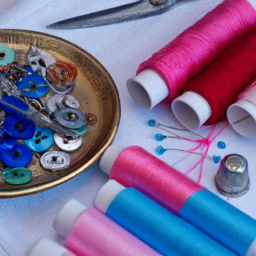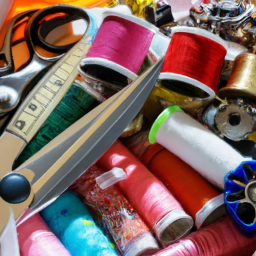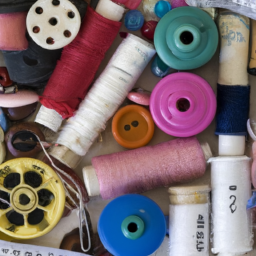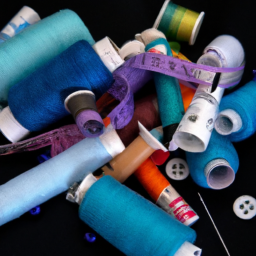
Learning how to sew is an essential skill for anyone interested in creating their own clothing or making alterations. Sewing allows you to bring your creative ideas to life while also being economical and environmentally friendly. Whether you’re a beginner or looking to enhance your sewing techniques, this guide will provide you with step-by-step instructions to successfully sew material.
Step 1: Gather Necessary Supplies
Before you begin sewing, gather the following supplies:
- Sewing machine
- Thread
- Needles (appropriate for your fabric type)
- Scissors
- Fabric pins
- Measuring tape
- Fabric marker
Step 2: Prepare Your Workspace
Set up your sewing machine on a sturdy table or desk with sufficient lighting. Clear the area and ensure you have enough space to easily work with your fabric.

Ensure you have a well-lit and organized workspace for seamless sewing.
Step 3: Choose Your Fabric
Selecting the right fabric is crucial for the success of your sewing project. Consider factors like the desired garment, fabric weight, and stretchiness. Pre-wash and iron your fabric to remove any potential shrinkage before sewing.
Step 4: Cut and Pin Your Fabric
Using a measuring tape and fabric marker, measure and mark your desired pattern on the fabric. Cut along the marked lines. Pin the fabric pieces together, ensuring they match correctly.

Measure, mark, and cut your fabric pieces precisely.
Step 5: Set Up Your Sewing Machine
Thread your sewing machine properly according to its instructions. Install the appropriate needle for your fabric type. Adjust the stitch length and tension as needed.
Step 6: Start Sewing
Place the fabric under the sewing machine’s presser foot, aligning the edge with the desired seam allowance. Lower the presser foot and begin sewing slowly, guiding the fabric along the chosen stitch line. Take your time to ensure accuracy.

Guiding the fabric carefully, sew along the intended stitch line.
Step 7: Finishing Touches
After sewing the desired sections, backstitch to secure the stitches. Trim any loose threads and press your sewn material with an iron to give it a polished look. There you have it! You’ve successfully sewn your fabric and completed your project.

Trim loose threads and press your sewn material with an iron for a professional finish.
Conclusion
Sewing your own material is a rewarding and practical skill to acquire. With the right tools, preparations, and techniques, you can confidently create garments and personalize your wardrobe. Remember to practice, be patient, and don’t be afraid to try new projects. Happy sewing!




